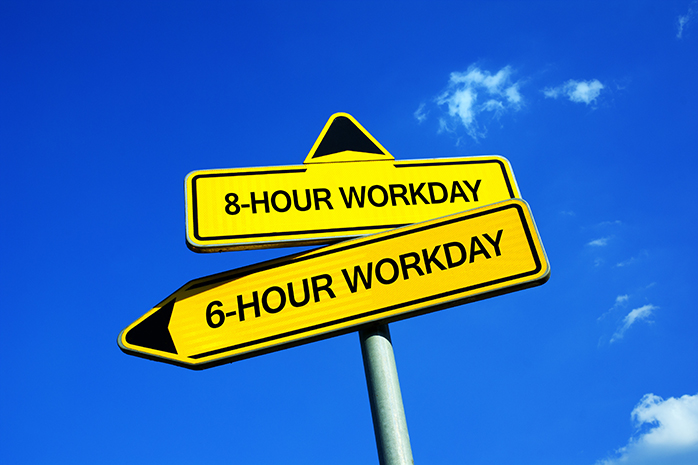
By Heather Nezich, courtesy SBAM Approved Partner ASE
In the U.S., full-time employees generally work 40+ hours per week. We work more than most first world nations including Germany, France, and England. But are we as productive?
According to data provided by Ohio University, the average worker is productive for two hours and 53 minutes out of an 8-hour work day. The following activities account for some of the remaining time:
-
Reading news websites – 1 hour 5 minutes
-
Social media – 44 minutes
-
Discussing non-work-related topics – 40 minutes
-
Search for new jobs – 26 minutes
Time is also lost with workplace interruptions. The average office worker is interrupted every three minutes, and it takes another 23 minutes to get back on task. To be productive within an 8-hour day, employees must take regular breaks. Ideally, the human brain needs a 15-minute break for every one hour of work.
The top 10% of highly productive employees do not work a full eight hours. They typically take 15-20 minute breaks every 52 minutes. Data such as this is what inspired a Swedish study a few years back to evaluate the effect of a six-hour work day.
The study took place at the Svartedalens retirement home and was funded by the Swedish government. Employees went from 8-hour shifts to 6-hour shifts but were allowed to maintain their 8-hour salary. Another similar facility participated as a control group by maintaining 8-hour shifts. When compared, 68 nurses who worked 6-hour days took half as much sick time as those in the control group. They were also 2.8 times as likely to take any time off in a two-week period. In addition:
-
Employees reported higher energy levels and efficiency
-
Employees called in sick 15% less
-
Employees reported that their health improved 20%
-
Employees were 20% happier
-
Employees reported having more energy both at work and home
Due to the increase in energy, the nurses working 6-hour days were able to do 64% more activities with the elders. But although productivity increased, profitability decreased. In order to allow the 80 nurses to work reduced hours, they had to hire 17 additional staff members. Those new hires added $738,000 to payroll, which equates to a 22% increase. They estimate that about half of that expense is offset by the reduction in sick time, time off, and unemployment. While the experiment proved an increase in employee satisfaction and productivity, the added costs for additional staff need to be further analyzed.
In the UK, 6 out of 10 bosses say that cutting hours boosted overall productivity. Although not the world-wide norm, France offers 35-hour work weeks. In the U.S. work weeks average 47 hours. This equates to a full day longer than a standard 9-5 work week. While hourly employee hours are regulated, salaried employee hours are not.
History has shown that reducing hours and allowing employees more down time increases productivity. Back in 1914, The Ford Motor Company cut hours from 16 to 8 and doubled workers’ salaries. The result was increased productivity. We’ve held onto the 8-hour work day since then.
Researchers at Stanford University have linked longer working hours to increased stress and sleep deprivation. But organizations are reluctant to adopt the shorter day. They are worried that levels of productivity might suffer despite research evidence to the contrary. Some HR experts are predicting Swedish success stories will eventually lead to the globalization of the 6-hour day. But don’t expect that anytime soon in the U.S., based on how engrained the 8-hour working day is here. In the meantime, encourage frequent breaks throughout the day.
To view the Ohio University infographic on the 6-hour workday, click here.